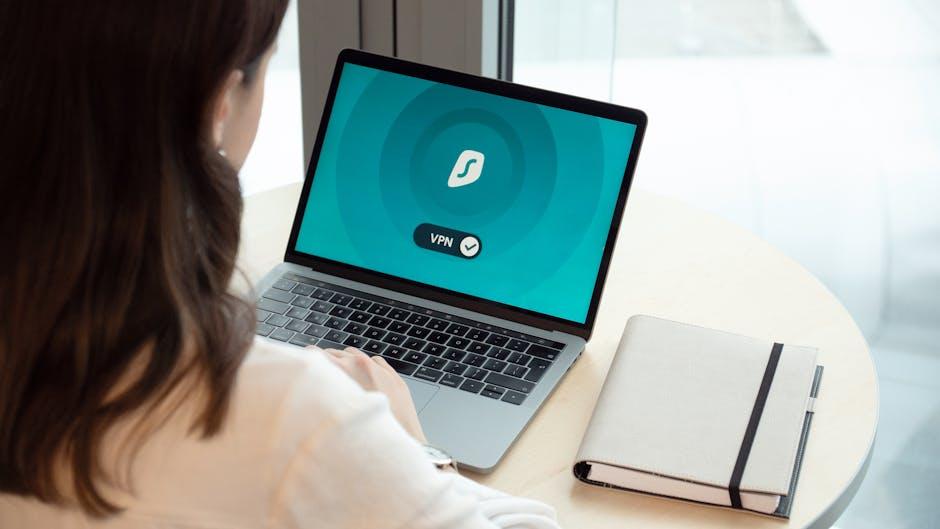In recent years, the streaming industry has experienced exponential growth, revolutionizing how audiences consume media across the globe. As platforms like Netflix, Hulu, and Disney+ expand their offerings, a parallel rise in the use of Virtual Private Networks (VPNs) has introduced new dynamics into this digital ecosystem. VPNs, originally designed to enhance online privacy and security, are now being used by consumers to bypass geographical content restrictions, leading to a complex interplay between user access and industry regulations. This article delves into the dual role of VPNs in the streaming landscape, examining whether they serve as a boon by broadening audience reach or pose a challenge by undermining licensing agreements. Through an instructive exploration, we aim to unravel the multifaceted impact of VPNs on the streaming industry, offering insights into how this technology is reshaping content accessibility and distribution.
Understanding the Role of VPNs in Streaming Access
Virtual Private Networks (VPNs) have become a double-edged sword in the realm of streaming services. On one hand, they offer users the ability to bypass geographical restrictions, unlocking a treasure trove of content otherwise unavailable in their region. This is particularly appealing to viewers who wish to access exclusive shows or movies from international catalogs. VPNs empower users by providing a sense of global access, enhancing the viewing experience for those who might feel restricted by regional content limitations.
However, the streaming industry faces challenges due to the increased use of VPNs. Licensing agreements are often region-specific, and when VPNs are used to circumvent these restrictions, it can lead to several issues for content providers, including:
- Loss of Revenue: Streaming platforms may lose potential income when users access content without adhering to regional pricing models.
- Legal Complications: Breaches of licensing agreements can result in legal disputes between content creators and streaming services.
- Increased Costs: Platforms may need to invest more in technology to detect and block VPN usage, driving up operational expenses.
As the debate continues, it remains crucial for both users and industry stakeholders to navigate the evolving landscape of digital content access responsibly.
Analyzing the Impact of VPNs on Content Licensing
The advent of VPNs has significantly influenced the landscape of content licensing within the streaming industry. On one hand, VPNs offer users the ability to bypass geographical restrictions, granting access to a broader range of content. This expanded access can lead to an increase in viewership and subscriptions for streaming platforms, as users from regions with limited content can now enjoy a wider variety of shows and movies. In this context, VPNs appear to support the streaming industry by potentially increasing global audience engagement.
On the flip side, content licensing agreements are often region-specific, tailored to the preferences and legal stipulations of each market. When users employ VPNs to access content not licensed for their region, it can disrupt these agreements. This practice raises several concerns for the industry, including:
- Revenue Loss: Streaming services may lose out on potential licensing deals in regions where users access content via VPNs.
- Market Analysis Challenges: Accurate data collection becomes difficult, affecting market strategy and content acquisition decisions.
- Legal Repercussions: Companies might face legal challenges from rights holders for not adequately enforcing geographical restrictions.

Exploring VPNs as a Tool for Bypassing Geographical Restrictions
In the age of global digital consumption, Virtual Private Networks (VPNs) have emerged as powerful allies for users seeking to access content beyond their geographical confines. This capability, while immensely beneficial for consumers, has sparked a debate within the streaming industry. VPNs essentially cloak a user’s IP address, making it appear as if they are accessing the internet from a different location. This technological maneuver allows users to bypass geographical restrictions imposed by streaming platforms, unlocking a world of content that might otherwise be unavailable in their region.
- Access to a wider variety of content: Users can enjoy shows, movies, and sports events that are exclusive to certain countries.
- Avoidance of censorship: In regions where internet content is heavily regulated, VPNs offer a way to access a more open internet.
- Potential conflicts with licensing agreements: Streaming platforms have regional licenses and agreements that could be undermined by VPN usage.
While the consumer benefits are clear, the streaming industry grapples with the potential implications. Content providers argue that VPN usage can violate licensing agreements, potentially leading to financial losses. Yet, from a user’s perspective, VPNs represent a tool of empowerment, offering freedom and choice in a digital landscape often segmented by borders. This dynamic interplay between user autonomy and industry regulations continues to evolve, shaping the future of digital content access.

Strategies for Streaming Services to Adapt to VPN Usage
To effectively manage the impact of VPN usage, streaming services can adopt a range of strategic measures. Investing in advanced detection technologies is crucial. By deploying sophisticated algorithms and machine learning models, these platforms can identify VPN traffic more accurately, ensuring that only legitimate users access their content. This not only protects licensing agreements but also enhances user experience by reducing unauthorized access.
Streaming services can also rethink their pricing and distribution models. Offering flexible subscription plans that cater to different regions can make legitimate access more appealing than bypassing geo-restrictions. Additionally, forming strategic partnerships with VPN providers to offer co-branded services or discounts could turn potential adversaries into allies, encouraging users to access content legally while still enjoying the privacy benefits of VPNs. By adapting these strategies, streaming platforms can better align with user needs while maintaining control over their content distribution.







































